Crossing the border from Uzbekistan to Turkmenistan overland at Xo’jayli, Kunya-Urgench (Old Urgench) is the first town you arrive in. If you cross the border the other way around, it would also be the last stop in Turkmenistan before heading to Urgench and Khiva, Uzbekistan. Either way, this ancient town reminds us that these places lie within ONE Khorezm region and that the current border has only recently been installed artificially. It was interesting to note many commonalities between the monuments in Kunya-Urgench and those in Khiva in Uzbekistan.
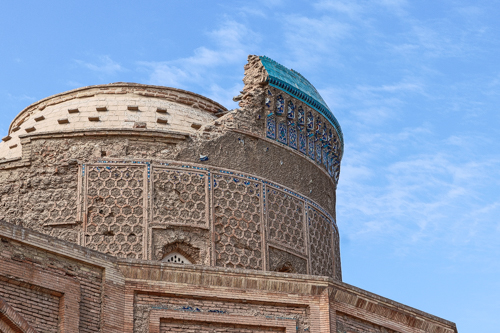
Key highlights of the monuments in the archaeological site
Kunya-Urgench, situated in north-western Turkmenistan, was once the capital of Khorezm. While the basis of the town was already in place in the B.C. era, its peak was from the 12-13th centuries and the current historical site contains ruins from the 11-16th centuries. In the huge site, there are many hills covered by soil and plants, which may await further excavation. Below, I’d like to share the most stunning monuments that shouldn’t be missed if you visit there.
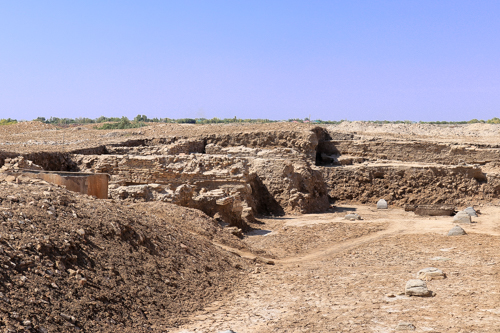
Kutlug Timur Minaret
Stepping into the archaeological site, you’ll see Kutlug Timur Minaret. Standing at 67m, it’s visible from all over the site. A closer look reveals its beautiful Islamic geometric patterns. The minaret dates back to the 11-12th centuries, but its uppermost part, which sits at a slight incline to the rest, was restored later.
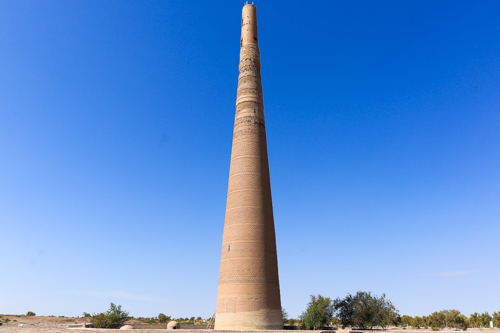
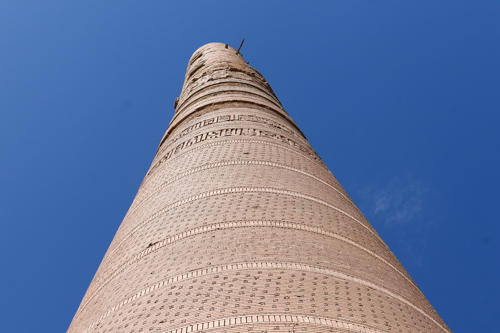
Turabek-Khanum Mausoleum
Turabek-Khanum Mausoleum is the most famous building at the site. Both its exterior and interior designs are beautiful and remarkable, which alone make it worth visiting. It’s composed of two chambers – a large hall with a dome, plus a smaller one.
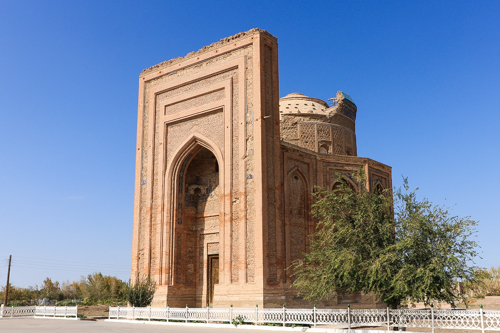
The large chamber’s dome features a twelve-sided exterior. Although badly damaged, it still features beautiful turquoise-colored mosaics and geometric brickwork.
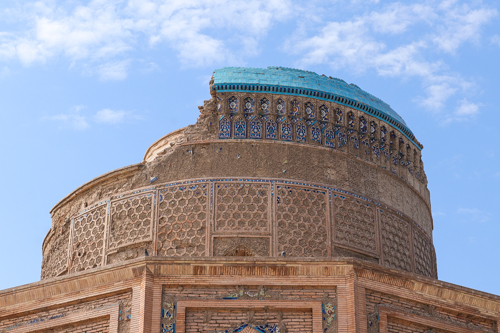
It’s interesting to see that, while the exterior is twelve-sided, the interior reveals a beautiful transformation from being twelve-sided at the top to hexagonal for the walls. Its decoration that resemble flowers and starts in blue and orange is sophisticated, evidence of the high level of craftsmanship of the local architects.
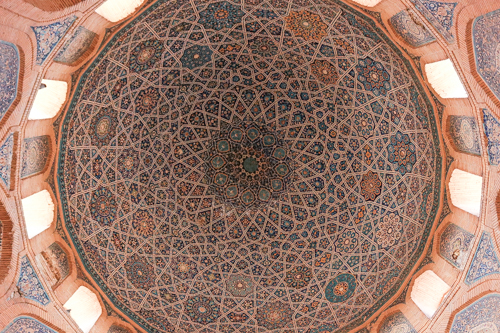
While the main hall is twelve-sided, the entrance hall is rectangle-based. Its decoration is also different from that of the main hall, reflecting the craftsmen’s efforts at distinguishing the space from the main hall. It looks being influenced by Persian Islamic patterns.
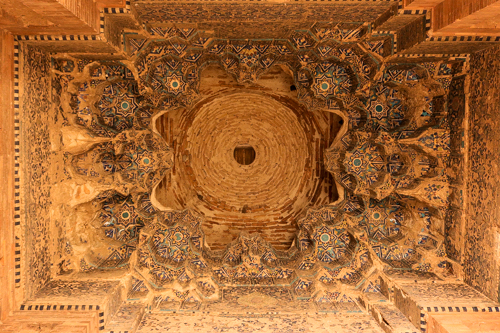
Tekesh Mausoleum
This is Tekesh Mausoleum, which is considered to be a tomb of Khoresmshakh Tekesh, the founder of the Khorezm Empire back in the 12-13th centuries. The entire shape, which comprise the base cube that supports the decagonal dome, is unique. The exterior decoration, meanwhile, is both familiar in this region and also remarkable – each part is decorated by different beautiful Islamic patterns made up of different materials.
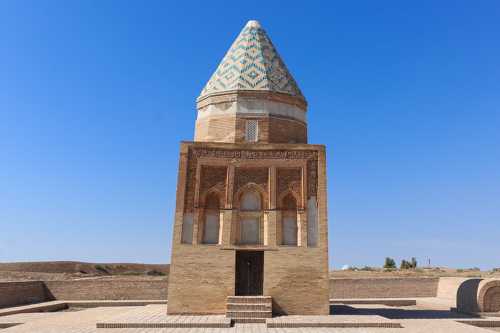
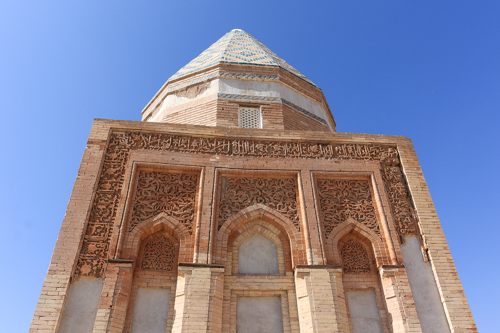
The site is huge and there are some further remains, such as the gate of caravanserai fortress. Also, there are many places and facts that are yet to be uncovered. In fact, we saw animals’ bones around the place, which our guide told us were mixed with construction material to build walls. The bones indicate that “something existed here!”
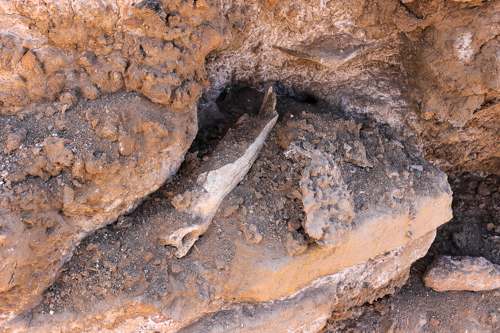
Getting there: It’s a 20-30 minute drive from the border between Turkmenistan and Uzbekistan. It’s a 3-4 hour drive from Darvaza.
How long to spend there: 60-90 minutes to cover the key monuments.
Activity keywords: Ancient City, UNESCO World Heritage, Mosque, Islamic Art
